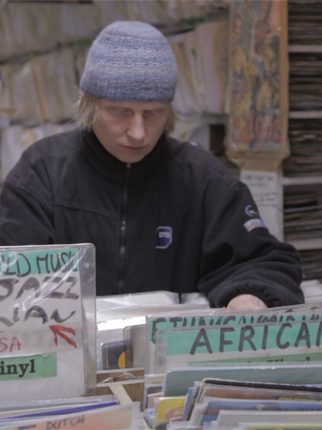The Drum Beat Goes Like This
The great majority of electronic music documentaries follow the same basic formula: lots of famous talking heads claiming eternal glory for something—a club, a DJ, a piece of equipment—that flies over the heads of music lovers who still can’t tell the difference between house and techno. (One sounds like disco; the other sounds like Kraftwerk. There, now, wasn’t that easy?)
On the surface, director Alex Dunn’s 808—which premiered at the 2015 SXSW Film Festival in Austin and gets an official release via Apple Music this Friday, December 9—is just like those other docs. Among the famous faces extolling the Roland TR-808 drum machine’s unique properties are Questlove, Pharrell Williams, Phil Collins, and Mike D and Ad-Rock of the Beastie Boys.
“When I first heard it,” says super-producer Rick Rubin, “I didn’t realize what a cool sound it was. It sounded so much like what an 808 sounds like and not like anything else, that I probably was looking for something that sounded more like drums.”

The 808 drove many of the most iconic records of the last 35 years, from Afrika Bambaataa and the Soul Sonic Force’s “Planet Rock” to Omni Trio’s drum & bass masterpiece “Renegade Snares” (Foul Play Remix) to Usher ft. Lil Jon and Ludacris’ “Yeah.” But the documentary mounts a convincing case for the titular machine as the foundation of all modern pop. (Granted, they might have chosen a better song than Phil Collins’ “Another Day in Paradise” to demonstrate the machine’s pop primacy, but you can’t have everything.)
“I worried [that the film] could come across as very niche,” says Dunn from his London home. “I didn’t want it to be a techy film, or a muso film. I wanted it to be very entertaining—something that would appeal to anyone and everyone. I think that’s part of the appeal of the 808: It’s been on so many records, that many people are a fan of the 808 without even knowing it. That’s kind of the point.”
The film can occasionally feel rushed; it crams a lot of info (and records) into its 90-minute running time, and the voice-over summaries (it’s narrated by Beats 1’s Zane Lowe) are often pat. But that concatenation was done with purpose: “If you start drifting too much over an hour and a half, I think it starts dragging,” says Dunn. “We got so much content, so much stuff, but this had to be short and snappy. We had a slightly longer [cut of 110 minutes], and as soon as we shaved the 20 minutes off, it just felt right—like a finished film.”
It’s certainly easy on the eye, and there’s real conviviality in many of the interviews: the Beasties cracking on one another (Mike D: “Our intention was really to shatter windows”); amazing footage of the Soul Sonic Force performing “Planet Rock” in their post-P-Funk finery; Todd Terry imitating his friends’ double-take when they heard the 808 rhythm track of Marvin Gaye’s “Sexual Healing” (“He was singing over a rap beat?!”); Strafe replicating his own club monster “Set It Off” live in his studio; the super-sweet Lady Tigra recalling the making of L’Trimm’s Miami bass classic “Cars With the Boom”; Hank Shocklee of Public Enemy’s production team the Bomb Squad noting the 808’s primacy in his own work: “OK, I’m doing a ballad? It’s not complete without the 808. There, it’s hot now.”
The documentary also features a wonderful animated opening sequence from Dunn’s longtime collaborator Paul Roberts—a travelogue of the machine’s topography, the credits written on its labels. “We definitely worked together on that,” says Dunn. “I wanted the graphics to fit into what I remember, nostalgically, to be the ‘80s: Back to the Future, Tron. He went away and came back with that. I was like, “This is awesome.’”
At the film’s climax, the 808’s inventor—Roland Electronics founder Mr. Ikutaro Kakehashi—makes a rare on-camera appearance, explaining how the machine’s unique timbre came about: “I used a defective transistor [that] made noises… This was the source of the sizzling sound.” When he couldn’t get the defective transistor, he explains, the 808 could no longer be made—hence its discontinuation at the height of its popularity. (Soulwax’s Dewaele brothers show off their 808—the one Marvin Gaye used on “Sexual Healing”—for which they paid 808€, naturally.)
Dunn wasn’t able to make it to Japan to film Mr. Kakehashi’s sequence, but the movie’s co-producer Arthur Baker did. Baker, of course, was also the co-producer of “Planet Rock,” and the fact of the defective transistor surprised even him. “They shot the interview, and we didn’t know anything about it,” says Dunn. “It wasn’t just a surprise for us and a surprise for the people who are watching, but a surprise for the people at Roland, as well.”





